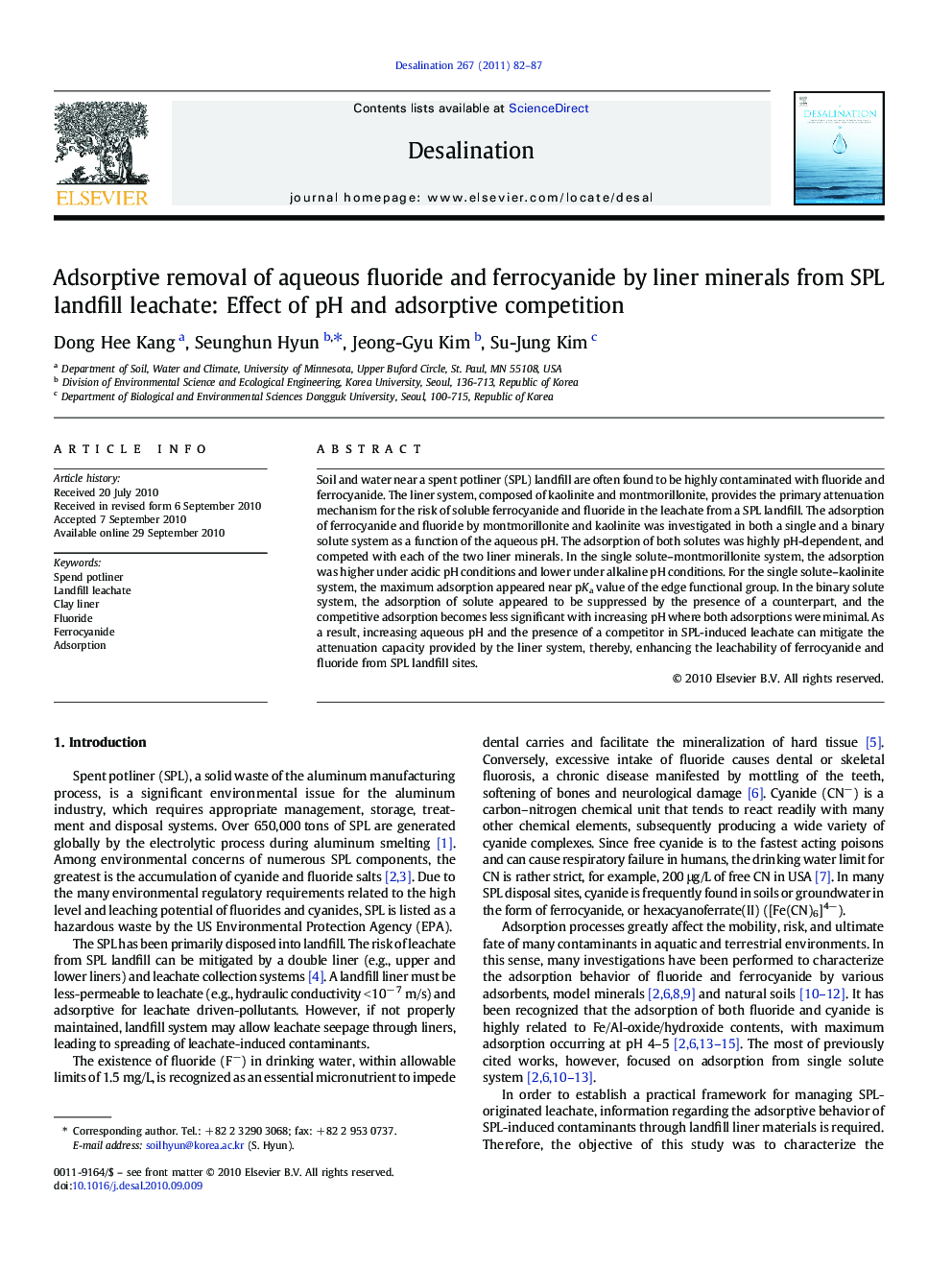| Article ID | Journal | Published Year | Pages | File Type |
|---|---|---|---|---|
| 625446 | Desalination | 2011 | 6 Pages |
Soil and water near a spent potliner (SPL) landfill are often found to be highly contaminated with fluoride and ferrocyanide. The liner system, composed of kaolinite and montmorillonite, provides the primary attenuation mechanism for the risk of soluble ferrocyanide and fluoride in the leachate from a SPL landfill. The adsorption of ferrocyanide and fluoride by montmorillonite and kaolinite was investigated in both a single and a binary solute system as a function of the aqueous pH. The adsorption of both solutes was highly pH-dependent, and competed with each of the two liner minerals. In the single solute–montmorillonite system, the adsorption was higher under acidic pH conditions and lower under alkaline pH conditions. For the single solute–kaolinite system, the maximum adsorption appeared near pKa value of the edge functional group. In the binary solute system, the adsorption of solute appeared to be suppressed by the presence of a counterpart, and the competitive adsorption becomes less significant with increasing pH where both adsorptions were minimal. As a result, increasing aqueous pH and the presence of a competitor in SPL-induced leachate can mitigate the attenuation capacity provided by the liner system, thereby, enhancing the leachability of ferrocyanide and fluoride from SPL landfill sites.
Research highlights► Adsorption of ferrocyanide and fluoride by SPL liners was highest in acidic pH. ► Competitive adsorption of two solutes for liner materials was apparent. ► pH and cosolute can influence adsorption capacity of liner materials.
